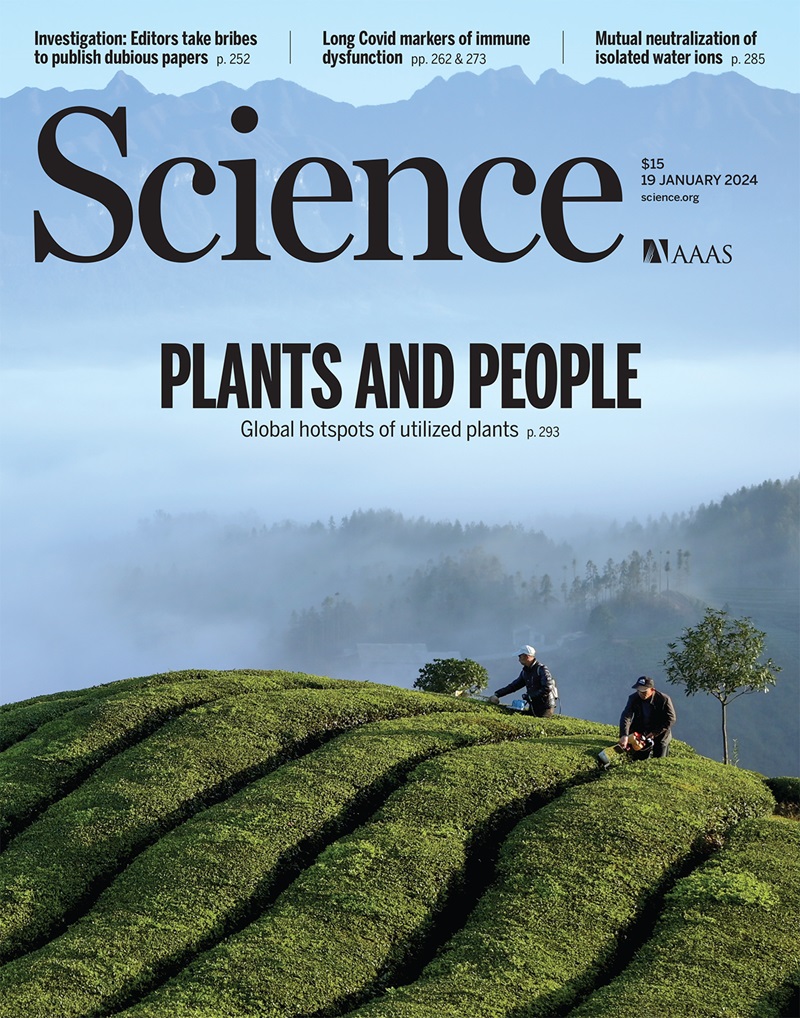光的改造
IF 45.8
1区 综合性期刊
Q1 MULTIDISCIPLINARY SCIENCES
引用次数: 0
摘要
制造过程的数字化导致了三维(3D)打印技术的发展,这种技术从数字模型开始,一层一层地构建物体。这种类型的增材制造能够按需生产具有复杂几何形状的功能部件(1)。然而,它也会导致报废产品的污染,特别是那些由聚合物制成的产品(2)。3d打印聚合物的闭环回收是一种理想的解决方案,其中材料可以无限期地重复使用而不会失去有价值的性能,但打印部件的机械完整性和可回收性之间存在不可避免的权衡。在本期的第170页上,Yang等人(3)报告了一种循环增材制造工艺,通过该工艺,光诱导聚合可以生产高性能聚合物部件,这些部件可以在特定条件下分解成可重复打印的液体树脂。这代表了可持续光促进3D打印的重要一步。本文章由计算机程序翻译,如有差异,请以英文原文为准。
Reformation by light
The digitalization of manufacturing processes has led to the development of three-dimensional (3D) printing technologies that build objects, layer by layer, starting with a digital model. This type of additive manufacturing is enabling the on-demand production of functional parts with complex geometries (1). However, it is also contributing to pollution from end-of-life products, particularly those made from polymers (2). Closed-loop recycling of 3Dprinted polymers, in which a material is reused indefinitely without losing valuable properties, is a desired solution, but there is an unavoidable trade-off between the mechanical integrity of printed parts and recyclability. On page 170 of this issue, Yang et al. (3) report a circular additive manufacturing process by which lightinduced polymerization produces highperformance polymer parts that can be decomposed into reprintable liquid resins under a specific condition. This represents a major step forward in sustainable lightpromoted 3D printing.
求助全文
通过发布文献求助,成功后即可免费获取论文全文。
去求助
来源期刊

Science
综合性期刊-综合性期刊
CiteScore
61.10
自引率
0.90%
发文量
0
审稿时长
2.1 months
期刊介绍:
Science is a leading outlet for scientific news, commentary, and cutting-edge research. Through its print and online incarnations, Science reaches an estimated worldwide readership of more than one million. Science’s authorship is global too, and its articles consistently rank among the world's most cited research.
Science serves as a forum for discussion of important issues related to the advancement of science by publishing material on which a consensus has been reached as well as including the presentation of minority or conflicting points of view. Accordingly, all articles published in Science—including editorials, news and comment, and book reviews—are signed and reflect the individual views of the authors and not official points of view adopted by AAAS or the institutions with which the authors are affiliated.
Science seeks to publish those papers that are most influential in their fields or across fields and that will significantly advance scientific understanding. Selected papers should present novel and broadly important data, syntheses, or concepts. They should merit recognition by the wider scientific community and general public provided by publication in Science, beyond that provided by specialty journals. Science welcomes submissions from all fields of science and from any source. The editors are committed to the prompt evaluation and publication of submitted papers while upholding high standards that support reproducibility of published research. Science is published weekly; selected papers are published online ahead of print.
 求助内容:
求助内容: 应助结果提醒方式:
应助结果提醒方式:


